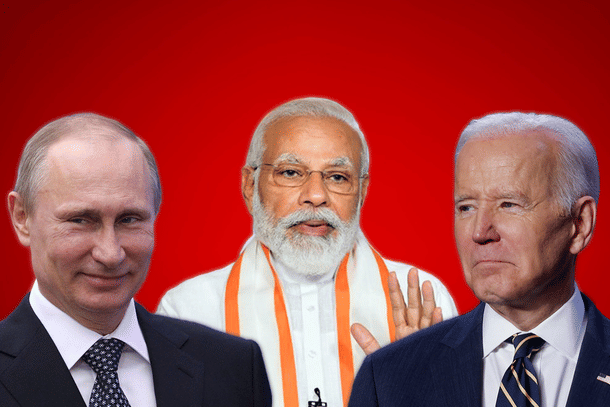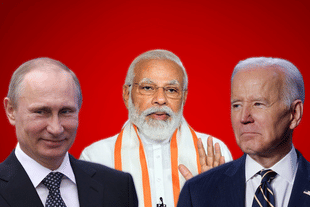World
In India-US Ties, Confrontation Is Beating Cooperation
Swarajya Staff
Aug 27, 2024, 06:01 PM | Updated Aug 30, 2024, 03:54 PM IST
Save & read from anywhere!
Bookmark stories for easy access on any device or the Swarajya app.


The perception of the India-United States (US) relationship is that things are going well and cooperation between the two nations is expanding.
This is especially evident in the defence segment, with Defence Minister Rajnath Singh recently concluding a four-day visit to the US.
Several key agreements were signed on that trip, including those that allow companies in India and the US to give priority to each other for weapons delivery in the event of, say, a war.
Moreover, co-production of several big-ticket items like the Stryker Infantry Combat Vehicle (ICV), Javelin anti-tank missiles, MQ-9B armed drones, and General Electric GE F-414 engines are on the cards as well.
When Singh was in the US, the export of $52 million worth of anti-submarine warfare sonobuoys to India also got a nod.
The US has also become India’s largest export destination for defence equipment, accounting for over 50 per cent of India’s total defence exports. US-based companies, led by Boeing, are sourcing a billion-dollar worth of components, systems, and sub-systems from India.
Not to mention the India-US joint military exercises that occur regularly.
So, all good? Not really.
There seem to be issues bubbling under the surface that are hard to ignore.
Take, for instance, Bangladesh.
India and the US had two entirely different views on the toppling of Bangladesh’s former prime minister Sheikh Hasina. While India supported Hasina to the hilt, the US lent support to the opposition forces, leading to the current turmoil and ruins that Bangladesh is in today.
This divergence explicitly comes out in the statements released by India and the US after Prime Minister Narendra Modi and President Joe Biden had a phone call yesterday (26 August).
In the US readout, there is no mention of Bangladesh, while in the Indian readout, Bangladesh is highlighted as a prominent topic of discussion — hinting that India and the US are not on the same page on Bangladesh.
Another thorn is the continuous support for Khalistani terrorists residing on American soil; case in point, Hardeep Singh Nijjar.
The US has ignored India’s demand to stop providing safe havens to terrorists like Nijjar. Further, it started a smear campaign using the media, frequently leaking half-baked reports of a murder-for-hire plot involving Nijjar.
In fact, the US asked for accountability from the Indian government to punish officials it claimed were involved in the murder plot.
On top of that, some in the US even directly blamed India’s National Security Advisor (NSA) Ajit Doval and Research and Analysis Wing (R&AW) chief Samant Goel for the murder-for-hire plot.
And, of course, the Russia-Ukraine war. The US has repeatedly made its displeasure public regarding India’s “neutral” stance on the conflict. Instead of toeing the US line, India has maintained that it sides with peace and has called for a dialogue between the two warring nations.
When PM Modi visited Russia and hugged President Vladimir Putin, Under Secretary of State Donald Lu and US Ambassador to India Eric Garcetti both expressed disappointment.
Garcetti went to the extent of saying that the strategic autonomy that India likes to have may not work in the case of war and that it may have to choose a side.
The US has, from time to time, threatened India with sanctions for high-value weapons purchases from Russia.
Lastly, there have been delays in the delivery of GE F-404 jet engines that power India’s own fighter jet — Tejas. As a result, the jet's commissioning with the Indian Air Force has been delayed by several months.
Some feel that the US is deliberately delaying the engines in the use of a carrot-and-stick approach. Extend an olive branch by letting India jointly co-produce GE F-414 jet engines (meant to power the next-generation Tejas Mk-2 jets), Javelin anti-tank missiles, and MQ-9B armed drones but also put pressure on India in public to shame its stance on issues like Russia-Ukraine and Khalistan.
Although there is much to gain for both nations by cooperating with each other, it seems that disagreements are trumping cooperation for now.
Perhaps the next administration in the US, due to be elected this November, might be able to smoothen the ties.





